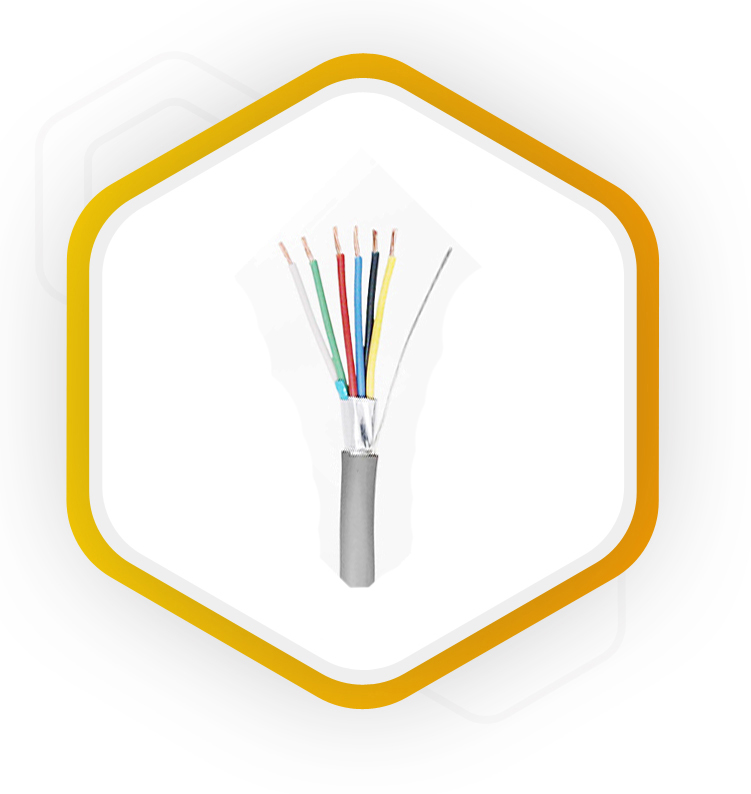Signal Cables

We also Manufacture variety of cables like Fire Alarm Cables, Fire Survival Cables, Instrumentation Cables, Control Cables, Signal Cables, Screened Cables & Multicore Flexible Cables.
SRI PADMAVATHI CABLES, an ISO 9001: 2015 certified, MSME & GeM ( Govt. e-Market) registered company associated with manufacturing and marketing "SPCWIRREEz" Brand as per IS, BS & IEC Standards. Copper Conductor PVC/XLPE/PE Insulated Electrical Cables and wires. Voltage grade up to 300 / 600 V.
Signal cables are used to transmit electrical or optical signals between devices. They are commonly used in audio, video, data, and communication applications. The type of cable signal required depends on the nature of the signal being transmitted and the environment in which it will be used.
Key features of Signal Cables :
Signal cables are used to transmit electrical signals between devices, ensuring clear communication and minimal interference.
-
Shielding - Often equipped with shielding (foil or braided) to reduce electromagnetic interference (EMI).
-
Low Signal Loss - Designed to minimize attenuation (signal loss) over long distances.
-
High Conductivity - Made from high-quality conductive materials like copper or silver-plated copper to ensure efficient signal transmission.
-
Insulation - Uses high-quality insulation materials (e.g., PVC / Polyethylene) to prevent signal degradation
-
Connector Compatibility - Available with different connectors such as RCA, XLR, HDMI, BNC, and more, depending on the application.
-
Flexibility and Durability - Designed to be flexible for easy installation while being durable enough to withstand mechanical stress.
-
Impedance Matching - Maintains consistent impedance to prevent signal reflection and distortion.
-
Low Capacitance - Reduces signal degradation and maintains signal clarity, especially in audio and high-frequency applications.
-
Twisted Pair - Some signal cables use twisted-pair / Traid Cables to improve signal integrity and reduce interference.
-
Application-Specific Design - Different signal cables are optimized for specific uses such as audio, video, networking, or industrial automation.
Types of Signal Cables :
Data Communication Cables :
-
Data Communication Cables - Used for networking and internet.
-
and RS-485 and RS-232 Cables - Used in industrial and serial communication.
Instrumentation and Control Cables :
-
Shielded Twisted Pair (STP) - Used in industrial and communication applications to reduce interference.
-
Unshielded Twisted Pair (UTP) - Common in networking.
Signal Cables application industries :
Signal cables are used in various industries for transmitting data, control signals, and communication between devices.
Key industries where signal cables are commonly applied :
-
Telecommunications : Used for data transmission, networking, and telephony. Fiber optic and coaxial cables are widely used for high-speed communication.
-
Industrial Automation : Used in control systems, PLCs, SCADA systems, and sensors. Helps in real-time monitoring and process automation.
-
Power Generation & Distribution : Used in substations, power plants, and renewable energy installations. Transmit control signals for switchgear and monitoring equipment.
-
Automotive & Transportation : Used in vehicle communication systems, GPS, and entertainment systems. Essential for sensor connections in electric vehicles (EVs) and smart transport systems.
-
Aerospace & Defense : Used in avionics, communication, and radar systems. Designed to withstand extreme temperatures, vibrations, and electromagnetic interference.
-
Medical & Healthcare : Used in medical imaging, diagnostic equipment, and patient monitoring systems. High precision and low noise cables for critical applications like MRI and ultrasound machines.
-
Oil & Gas : Used for data transmission in drilling operations and pipeline monitoring. Designed for harsh environments with high temperatures and corrosive conditions.
-
Building & Construction : Used in fire alarm systems, security systems, and HVAC control. Essential for smart building automation and IoT applications.
-
Consumer Electronics : Used in audio/video systems, home automation, and gaming consoles. HDMI, USB, and auxiliary cables are common examples.
-
Railway & Metro Systems : Used for signaling, communication, and control systems. Ensures smooth operation and safety in transportation networks.